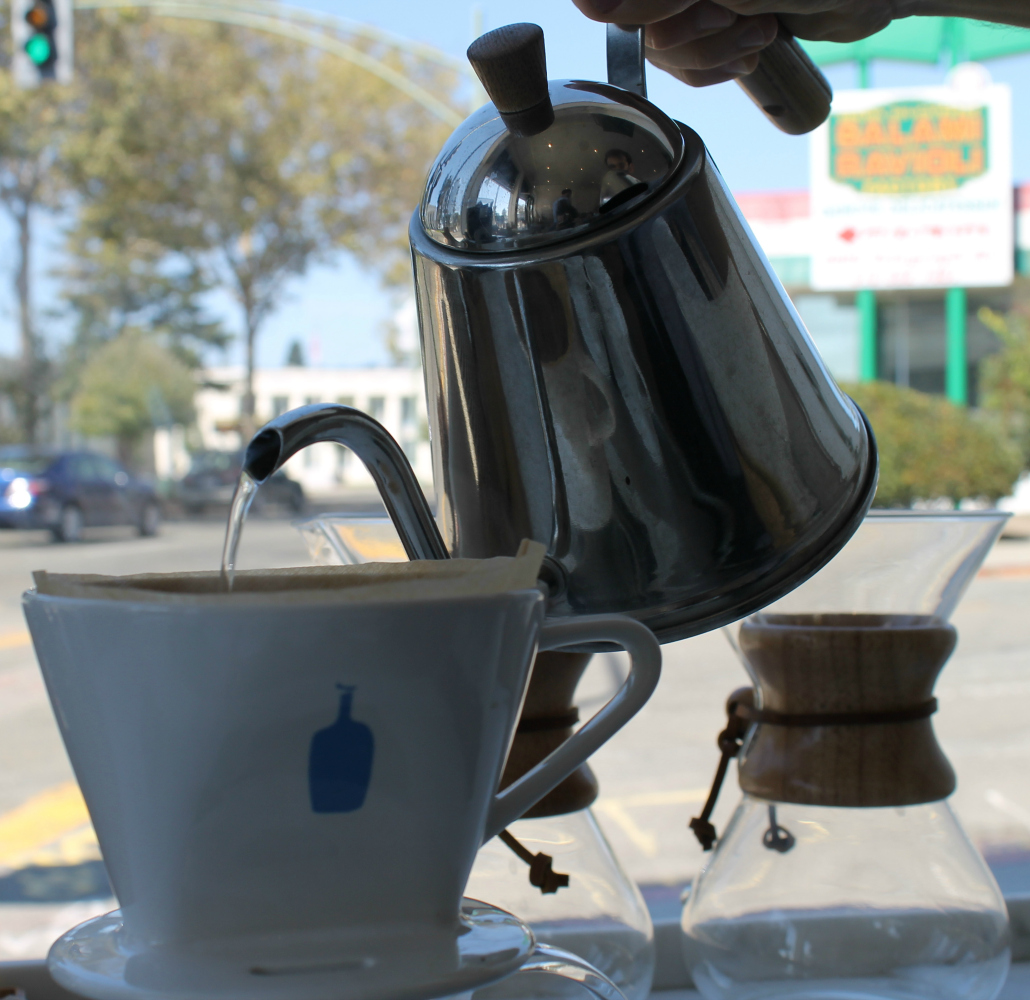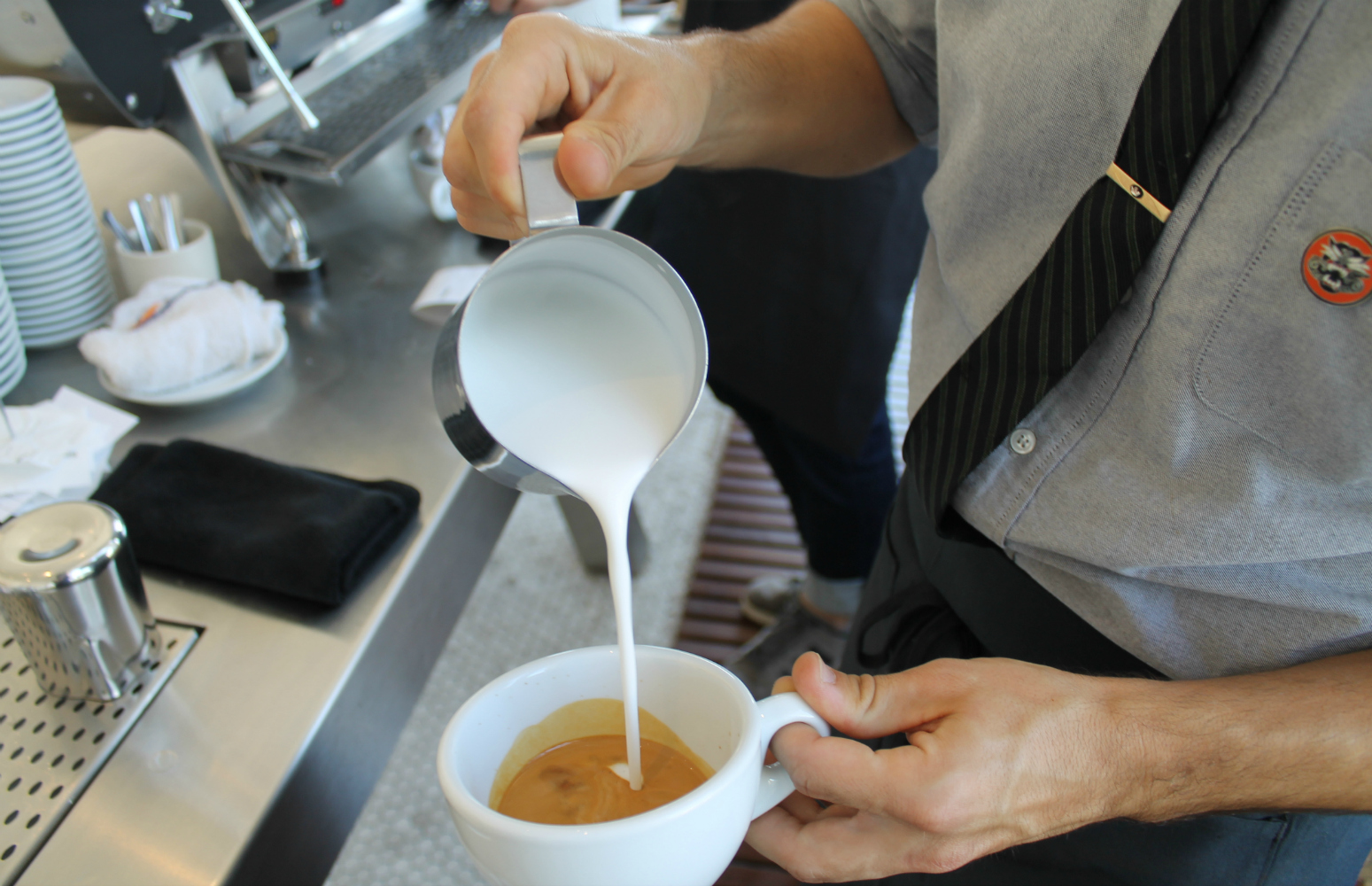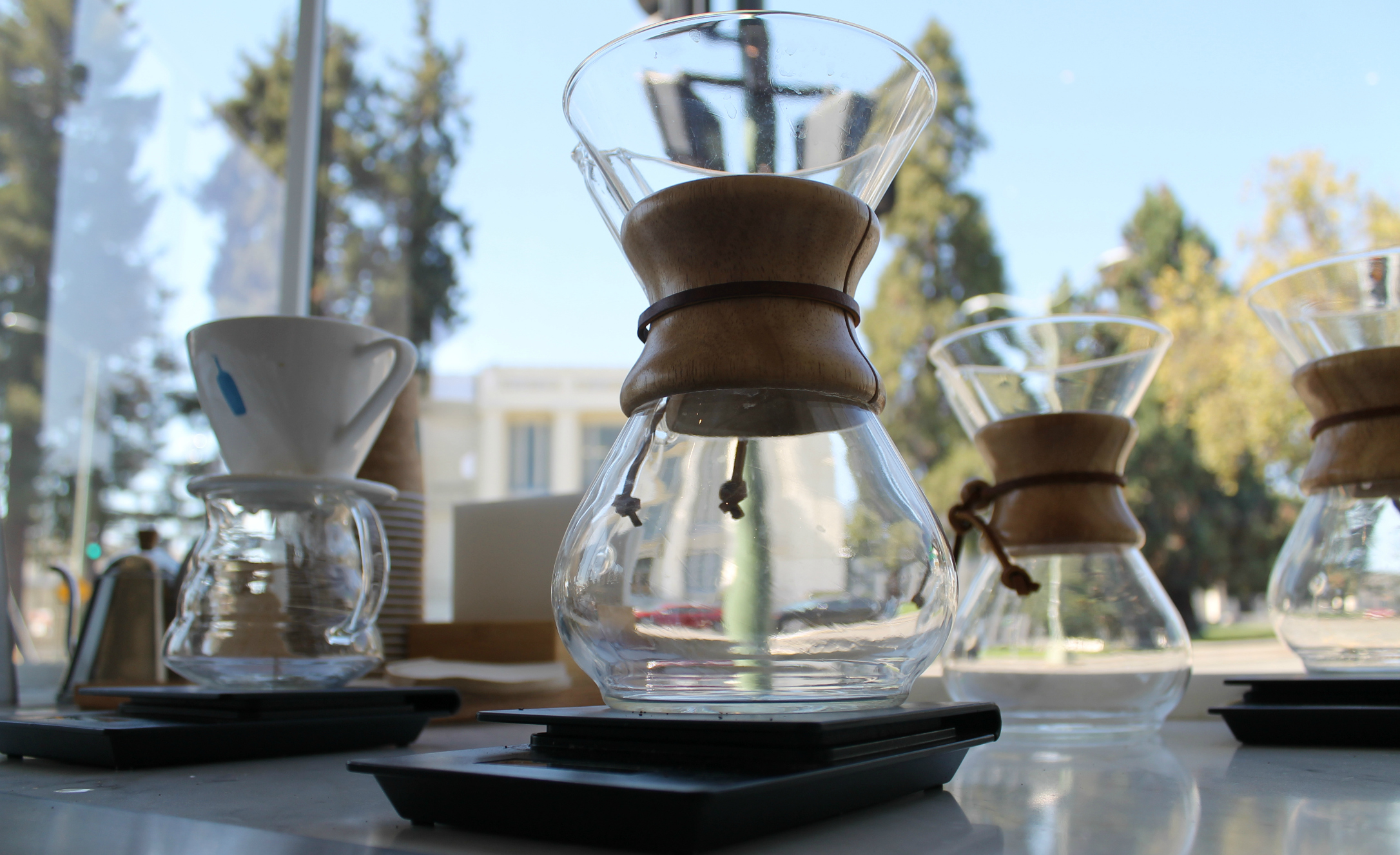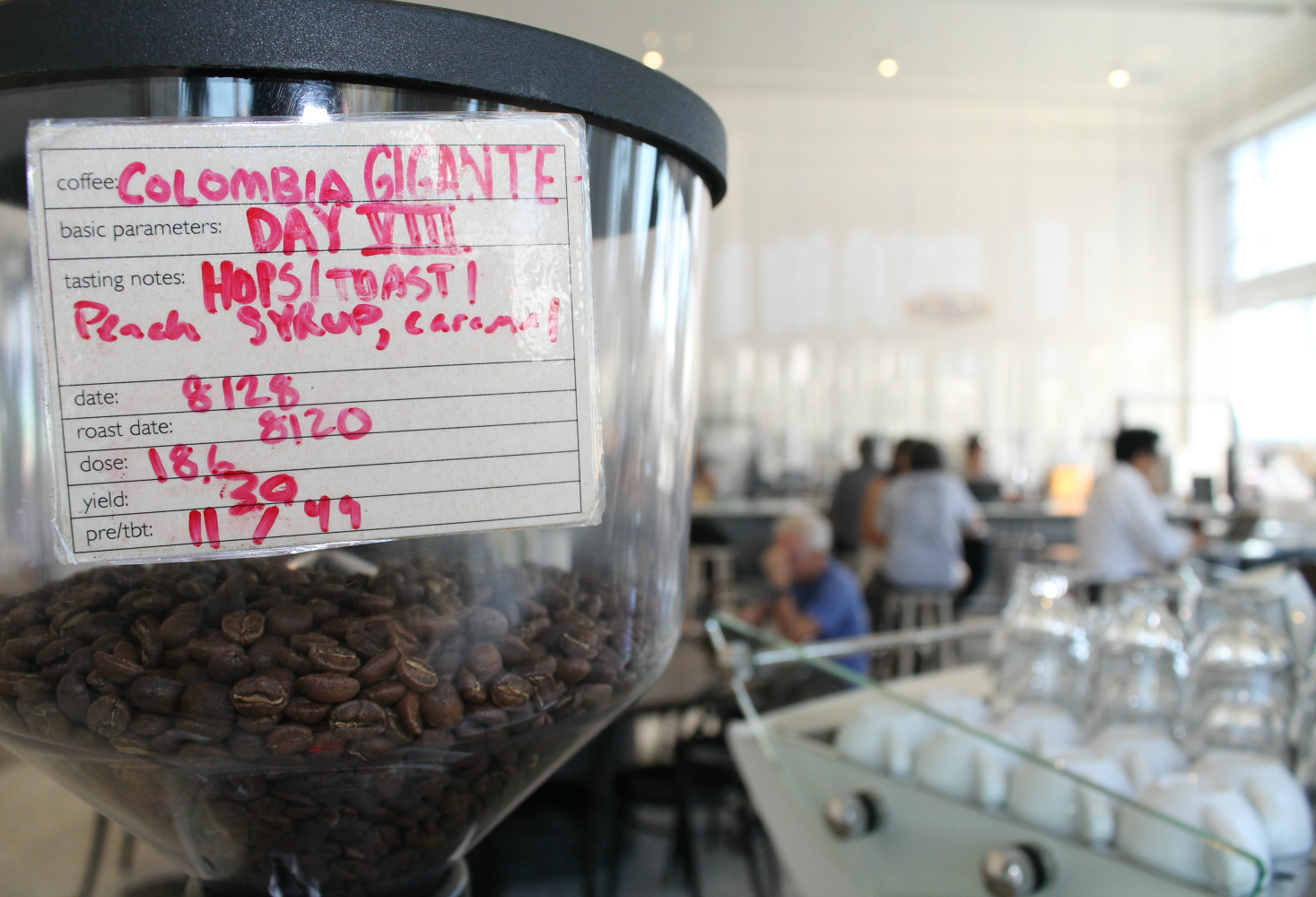
As much as the Bay Area loves its seemly infinite number of third wave coffee shops, it’s cheaper and more convenient to make coffee at home. And with the rise in coffee maker alternatives—the Aeropress, Chemex and pour over methods which have all gained popularity over the last few years—there are now more options than ever before to make a quality cup at home.
Yet even if you’ve dutifully followed all the advice on how to improve your home coffee making—you’ve shelled out for a burr grinder, bought a cone dripper, and have carefully selected coffee beans from your preferred third wave roaster—sometimes there’s still something missing. Why, if you’re using the same coffee as Blue Bottle/Philz/Four Barrel, will your morning cup made at home not taste as good as it does as when it’s made in their respective stores?
“Magic elves,” Michael Philips, Blue Bottle’s director of training (and 2010 winner of the World Barista Championship) said, deadpan. “That’s the secret to everything we do.”
“How do you get it to taste as good as the stores? You can’t,” said Philz Coffee CEO Jacob Jaber, son of the eponymous Phil. “You can try to follow the same process and procedure but there’s so many little details that we do, from the coffee making methodology, to the equipment we use, to the amount of beans we use, to the type of grind we use, to the quality of the water we use, to the way we pour, to the way we stir, to the ingredients that are added. Those are all factors, and important ones, and unless you get all of those right, it’s going to be hard to replicate it.”
But while making coffee will always lacks the obvious advantages of making coffee at a shop, like the expensive equipment and access to the freshest beans, with a few easy tweaks, it’s possible to get closer to that café taste–no magic elves required.

Water
When someone opens a coffee shop, not only do they have control over which $15,000 espresso machine to buy and what type of Edison bulb will best artfully light their café, they’re able to completely control what kind of water they’re using. And since coffee is 98% water, home coffee makers are immediately at a disadvantage when it comes to getting that café taste. At home, you’re not going to have access to the state of the art reverse osmosis system Blue Bottle uses, but even just a $20 Brita filter can make a huge difference, says Erin Meister, who trains baristas for Counter Culture Coffee.


